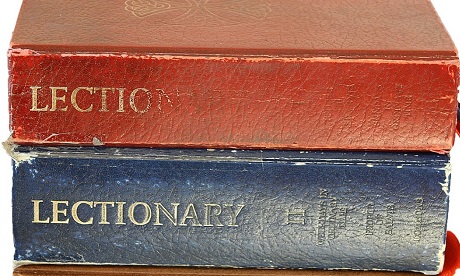The New Zealand Catholic Bishops’ Conference is working with the bishops’ conferences around the world including the UK, Ireland and Australia to develop a new lectionary for the Church.
The Tablet reports the bishops’ conferences are considering using the Revised New Jerusalem Bible (RNJB) published last year in the new lectionary.
The RNJB Foreword says: “attention has been given to rendering the language and imagery of the original languages accurately rather than by dynamic equivalence.”
Inclusive language
According to The Tablet, however, the bishops’ decision – made without meaningful consultation with scholars, clergy or faithful – to choose a literal translation that lacks inclusive language has sparked fury.
Overnight, Professor Thomas O’Loughlin told CathNews that inclusive language is a must.
“Anything that alienates someone such that they experience a sense of exclusion from the liturgy has no place there or we are arrogating to ourselves a right of judgement that belongs to God alone”.
“This is not simply a matter of adding ‘and sisters’ when the Greek text has but adelphoi – as the NRSV has done – but of making sure that there are no texts used which are so rooted in a patriarchal culture that many women today sense exclusion”, he wrote.
Multiple translations
O’Loughlin takes further the selection of a suitable translation, asking if just one translation is necessary or indeed optimal.
When considering a lectionary O’Loughlin says focussing on a literal translation is a distraction.
He says the purpose behind a lectionary is for proclamation and suggests that fundamental to any choice of text is how comprehensible it is when read aloud.
He also suggests we need different translations for different settings, for example for use with children’s liturgies.
O’Loughlin is Professor Emeritus of Historical Theology
The University of Nottingham and currently serves as a director of both Studia Traditionis Theologiae and Brepols Library of Christian Sources.
His full piece will feature in Friday’s edition of CathNews.
Controversy contines
The Tablet says the lectionary project’s history, began in 2006, when Cardinal Cormac Murphy-O’Connor intimated that it was time to begin the process of producing a new one.
The New Revised Standard Version (NRSV) was the first alternative considered but finally in 2016 the bishops of England and Wales decided the new lectionary would use the more literal translation of the English Standard Version Catholic Edition (ESV-CE).
Much controversy followed.
The Tablet says one issue that has incensed the bishops’ critics is that the ESV “seen as Calvinist in its translation philosophy” was produced in the US by conservative evangelical scholars.
Another issue critics are concerned about is that the ESV – ‘essentially literal’ translation “seeks as far as possible to capture the precise wording of the original text and the personal style of each biblical writer.”
The Revised Standard Version (RSV) and its replacement, the NRSV, also aim for word-for-word accuracy, though the NRSV is a little looser than the ESV.
The Jerusalem Bible, on the other hand, favours “functional equivalence”: in other words, it is a translation that seeks to express the meaning of the ancient texts in modern terminology.
What makes a “functional translation” unfit for use in the liturgy is that it nullifies the theologies inherent in the ancient texts, the Tablet says.
It explains that functional or dynamic translation is “theologically lazy and catechetically irresponsible.”
It demands nothing of pastors and parishioners by way of grappling with God’s holy words, says The Tablet.
It destroys the biblical injunction of all the prophets to visit the past to understand the pain of the present and thereby to be empowered to create a new future.
The Tablet also points out that 21st century English has a far bigger vocabulary than was available in the standard dictionary of ancient Hebrew.
Where ancient Hebrew contains around 8,000 words, present day English has a far greater word choice available.
Finally, much has been made of the decision of the ESV translators not to use gender-neutral language.
Most modern translations use the inclusive “brothers and sisters”; the ESV – true to its “word-for-word” principle – translates it directly as “brothers”, but in a footnote explains: “Or brothers and sisters.
In New Testament usage, depending on the context, the plural Greek word adelphoi (translated “brothers”) may refer either to brothers or to brothers and sisters.”
We will always have arguments about translations and meanings, The Tablet concludes.
Source
- The Tablet
- Image: Rorate Caeli
News category: New Zealand.




